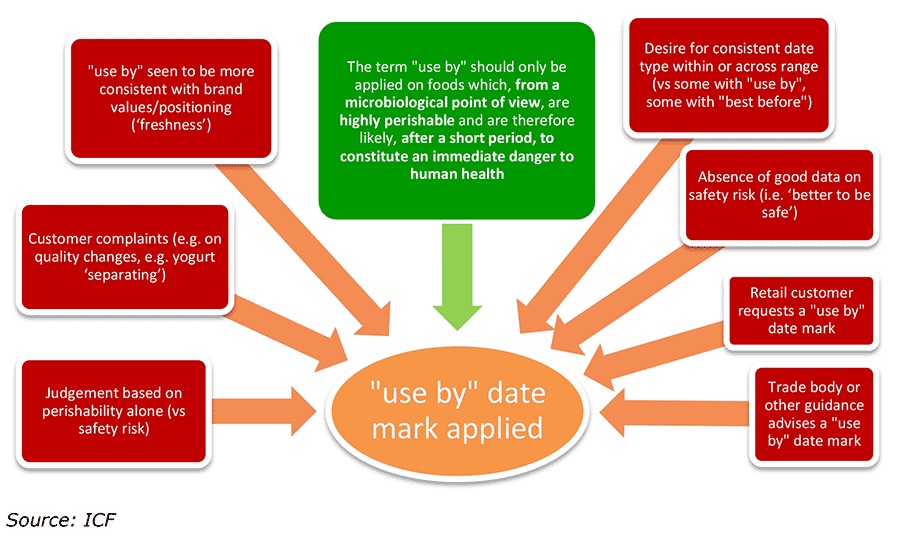A recent study on date stamping shows that confusion over date marking and other food label information contributes to as much as 10 percent of the annual 88 million tonnes (97 US tons) of food waste in the European Union across all sectors—from manufacturing to the consumer—and everything in between on the supply chain.
The study, “Market study on date marking and other information provided on food labels and food waste prevention,” was prepared for the European Commission by ICF in association with Anthesis, Brook Lyndhurst and WRAP.
In the EU, the “Food Information to Consumers” regulation requires that most pre-packaged foods display a date mark and accompanying wording that explains whether the date signals a threshold in the product’s safety (“use by”) or its quality (“best before”).
The date mark is intended for use by consumers, but also informs food chain operations such as retailers’ inventory management and food redistribution systems.
The study includes main food categories contributing to food waste, which include fruit and vegetables, bakery products, meat (including fish and poultry) and dairy products. Of these categories, the study suggests that any proposals to reduce food waste should focus on labeling practices on the food types for which the consumer decision to discard is likely to be informed by reading the on-package date label.
The greatest areas of opportunities for cutting waste due to date marking include yogurt, fresh juices, chilled meat and fish.
For other products, consumer decisions on whether to discard are more likely to be based on visual cues that indicate a decline in product quality and palatability.
The market survey also found variation in date marking practices within product types and among member EU states.
Of the 10 product types sampled for this study, only sauce, sliced bread and fresh juice had predominantly the same type of date mark in all eight member states surveyed.
The other product types tended to display a “use by” date stamp in some countries, and a “best before” in other countries. And, there wasn’t necessarily any consistency in “use by” or “best before” date marks in otherwise identical products manufactured by international brands from one EU member state to the next.
The report also found there was wide variation in the storage and open-life advice found on the same type of product.
The study recommendations call for the production of technical guidance for food businesses on how to:
- Determine shelf life
- Choose between “use by” and “best before” date marks
- Specify storage advice and open-life instructions
- Examine opportunities for possible extension of product life.
The study also calls for specific action by food producers to remedy the problem of illegible labels. This includes poorly stamped labels, distorted print, wrongly placed labels, etc.
To read the study in its entirety, visit the EU Publications Web site and download the “Market study on date marking and other information provided on food labels and waste prevention.”








